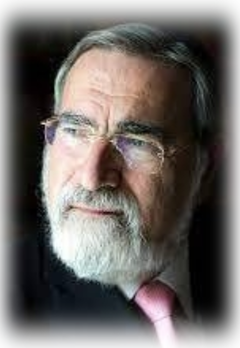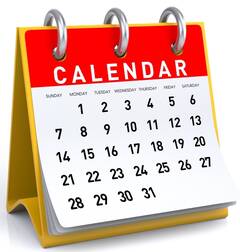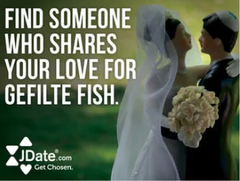Spotlight on Renowned Artist, Lynne Avadenka
05/26/2020 10:13:22 AM
Lynne Avadenka
| Author | |
| Date Added |
 I was looking forward to May 17 when the B'nai Moshe Sisterhood was planning to visit my studio. I’ve actually been working quite a bit in my studio since we’ve all been on lockdown, so instead of an actual visit which isn’t possible now, I’ve been invited to share some of my work with you here.
I was looking forward to May 17 when the B'nai Moshe Sisterhood was planning to visit my studio. I’ve actually been working quite a bit in my studio since we’ve all been on lockdown, so instead of an actual visit which isn’t possible now, I’ve been invited to share some of my work with you here.
But first a bit of background: I studied art, focusing on printmaking, at Wayne State University, where I received my BFA (1978) and MFA (1981). I’ve had an active studio career since then, supported by sales of my work, individual artist grants, residencies and teaching. Much, though not all, of my work is inspired by Jewish themes. If you’d like to get a larger look at my art and achievements, please check out my websites which can be found at www.lynneavadenka.com and www.signalreturnpress.org.
I’ll talk here about two recent projects: Living Under Water, a collaborative project that took me to Venice and Jerusalem, and Sacred Craft: Jewish Women in Early Hebrew Printing , a project funded by a grant from the Hadassah-Brandeis Institute, that began with research last year in the Hebraic Division of the Library of Congress in Washington DC.
In 2018 I spent three weeks in Venice, at the invitation of Beit Venezia (The Home for Jewish Culture) along with four other Jewish artists (all from Israel). Living Under Water was a project designed by Jerusalem based artist Andi Arnovitz and Shaul Bassi, the founder of Beit Venezia. The idea behind this effort was to create a body of work about the climate crisis inspired and informed by Jewish sources. We spent the first week of our residency listening to scholars, scientists, rabbis and environmentalists speaking about climate change and what Judaism has to say about it. Topics included the notion of a universal Shabbat, a day of rest all over the world (no buying, no selling, no driving, giving the planet a rest) and discussion about shmita---what would it mean for an agricultural cycle to be embraced on a global scale, as an environmental policy.
Culture) along with four other Jewish artists (all from Israel). Living Under Water was a project designed by Jerusalem based artist Andi Arnovitz and Shaul Bassi, the founder of Beit Venezia. The idea behind this effort was to create a body of work about the climate crisis inspired and informed by Jewish sources. We spent the first week of our residency listening to scholars, scientists, rabbis and environmentalists speaking about climate change and what Judaism has to say about it. Topics included the notion of a universal Shabbat, a day of rest all over the world (no buying, no selling, no driving, giving the planet a rest) and discussion about shmita---what would it mean for an agricultural cycle to be embraced on a global scale, as an environmental policy.
All the while, we were taking notes, keeping sketchbooks, and to be honest, enjoying getting to know a remarkable city and its Jewish history. We visited the ghetto numerous times, had special tours of the lagoon and MOSE project (the controversial project meant to protect Venice against rising tides), and because of kashrut considerations, spent a lot of time cooking as a group in the marvelous palazzo where we were housed. The last week of our residency we worked at Scuola di Grafica Internazionale di Grafica, a traditional print shop, creating a suite of prints as our visual responses to what we learned and experienced. Another important component of the project was a 60 page magazine of essays, poetry and visual art from the participants in the project. Meant to be used in Jewish educational settings, it is available in print as well as a digital download.
In 2019 our Living Under Water project was chosen to be exhibited at the third Jerusalem Biennale. The exhibition was housed in the Wolfson Museum, inside the Hechal Shlomo synagogue. Although Marc and I were not able to attend the opening, we spent three weeks in
Jerusalem while the show was on exhibit. I gave several impromptu tours of the show (including meeting up with Pearlena Bodzin and her husband Ephraim) and it was reviewed in the Jerusalem Post and Hadassah magazine. It was our hope that the exhibition would travel to Jewish museums across the world, but like so many other events, this possibility is now on hold. I’ve included a few of my works here, Afterword (a mixed media piece that plays on the text of the Akdamut (Forward) prayer of Shavuot, and one of my journal pages.
 Sacred Craft: Jewish Women in Early Hebrew Printing began when I was invited to contribute to an anthology of essays devoted to The Book of Exodus. I was taken with Verse 17:14, as this is the first time we see the word “book” in the Torah, as well as a commandment to write down and record events for the future. Since my work is all about the idea of the book, and since I’m a printmaker and I make artist’s books, I started reading about the history of Jewish books and the influence of the invention of printing on Jewish culture. And I started noticing in these sources the small entries about Jewish women’s involvement in the printing of Hebrew books. My grant from the Hadassah Brandeis Institute supported direct research at the Hebraic Division of the Library of Congress last May.
Sacred Craft: Jewish Women in Early Hebrew Printing began when I was invited to contribute to an anthology of essays devoted to The Book of Exodus. I was taken with Verse 17:14, as this is the first time we see the word “book” in the Torah, as well as a commandment to write down and record events for the future. Since my work is all about the idea of the book, and since I’m a printmaker and I make artist’s books, I started reading about the history of Jewish books and the influence of the invention of printing on Jewish culture. And I started noticing in these sources the small entries about Jewish women’s involvement in the printing of Hebrew books. My grant from the Hadassah Brandeis Institute supported direct research at the Hebraic Division of the Library of Congress last May.
Marc and I were in Washington, DC for a week, and had separate itineraries the entire trip. Every day he would head out to any number of historic sights, monuments and museums after walking me to the Library where I spent hours looking at the most remarkable Hebrew books, printed in the 1500s. It is fascinating that Jewish women were involved in the creation of these early books, taking over for husbands and fathers in the event of illness or death, running the business--from setting type, to printing, to selecting texts, to publishing and distribution. And how do we know this: we see these women’s names, set in type in these books.
As a result of this trip and continuing research, I’m creating a project that will be exhibited in New York, I hope, in 2021 or 2022…..more to come! And I hope the Sisterhood will get a sneak peek when we’re all able to be out and about.
To close, here are “quarantine” prints I’ve created, using wood type, stencils and color ink.


Thanks for the opportunity to share some of my work with you!
Lynne
Thu, October 16 2025
24 Tishrei 5786
 .
.
Today's Calendar
| Shacharit : 7:30am |
| Mincha/Maariv : 5:00pm |
Upcoming Programs & Events
Oct 26 Sisterhood Paid-Up Membership Event Sunday, Oct 26 12:00pm |
Nov 1 Experience Shabbat Experience Shabbat, Nov 1 9:30am |
Nov 7 Musical Kabbalat Shabbat November Friday, Nov 7 5:00pm |
Nov 17 Sisterhood Book Club Monday, Nov 17 7:00pm |
Dec 5 Musical Kabbalat Shabbat December Friday, Dec 5 5:00pm |
This week's Torah portion is Parshat Bereshit
Candle Lighting
| Friday, Oct 17, 6:31pm |
Havdalah
| Motzei Shabbat, Oct 18, 7:29pm |
-
Sunday ,
OctOctober 26 , 2025Sisterhood Paid-Up Membership Event
Sunday, Oct 26th 12:00p to 2:00p
We'll have a wonderful lunch, and artists from Creative Arts Studio will teach everyone how to make a mosaic picture frame to take home! -
Saturday ,
NovNovember 1 , 2025Experience Shabbat Experience
Shabbat, Nov 1st 9:30a to 11:30a
This spiritually uplifting experience will touch your mind, your heart, and your soul. -
Friday ,
NovNovember 7 , 2025Musical Kabbalat Shabbat
Friday, Nov 7th 5:00p to 8:30p
Get ready for a joyful, music-filled Kabbalat Shabbat that will lift your spirit! Sing, celebrate, and soak in the beautiful melodies as we welcome Shabbat together. -
Monday ,
NovNovember 17 , 2025Sisterhood Book Club
Monday, Nov 17th 7:00p to 8:30p
Join the Club! This month we'll be reading "The Goddess of Warsaw" by Lisa Barr -
Friday ,
DecDecember 5 , 2025Musical Kabbalat Shabbat
Friday, Dec 5th 5:00p to 8:30p
Get ready for a joyful, music-filled Kabbalat Shabbat that will lift your spirit! Sing, celebrate, and soak in the beautiful melodies as we welcome Shabbat together. -
Saturday ,
DecDecember 6 , 2025Experience Shabbat Experience
Shabbat, Dec 6th 9:30a to 12:00p
Join us for an uplifting and joyful Shabbat Experience! -
Sunday ,
DecDecember 7 , 2025Sisterhood Mikvah Learning
Sunday, Dec 7th 2:00p to 4:00p
Join us for an inspiring afternoon exploring the beauty and meaning of mikvah, including traditional and modern uses. -
Sunday ,
DecDecember 21 , 2025Chanukah Party and a Movie
Sunday, Dec 21st 5:00p to 9:00p
Join us on the 7th night of Chanukah for dinner, community Chanukiah lighting, and a movie after! -
Sunday ,
JanJanuary 11 , 2026B'nai Moshe at the Theatre
Sunday, Jan 11th 2:00p to 4:00p
Join us at the Birmingham Village Players to see Once Upon A Mattress!
Rabbi Jonathan Sacks, z"l
Learn from the mind of one of the world's foremost Jewish thinkers.

Calendar of Jewish Holidays
 Do you wonder when Purim or Pesach is? Does Rosh Hashanah come "early or late" next year? You can find the listing of all the upcoming holiday dates
Do you wonder when Purim or Pesach is? Does Rosh Hashanah come "early or late" next year? You can find the listing of all the upcoming holiday dates
Upcoming Events- JLive
Stay current on Upcoming events by clicking on: JLive
Looking for Love in all the Wrong Places?
If you are single and looking for your besheret, click on JDate - Enroll or JSwipe

Your mother would be so
happy






